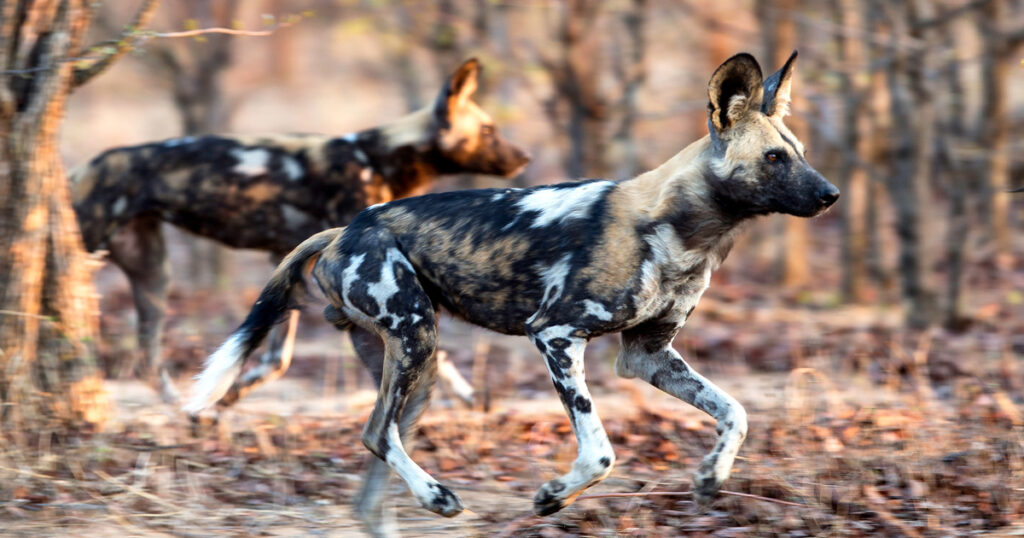Direct confrontation
As human populations grow and the areas where they live expand, the chance that we encounter wild animals directly increases, too. For many animals, encountering humans can be a neutral or even positive experience. However, some encounters may put both parties at risk.
Hippos, for example, are highly territorial creatures and are well-known for aggressively protecting their habitats and young. When humans encroach on hippo habitats, there is the potential for violent confrontations between the two species.
This can lead to humans being harmed or injured by these large animals or hippos being killed in self-defence or in retaliatory attacks after they have harmed humans.
Another animal sometimes involved in direct confrontation with humans in Africa is the crocodile. Crocodile attacks can be fatal, and these animals are powerful enough to destroy livelihoods by damaging fishing nets and boats. They instil great fear in people, too, which is enough to motivate retaliatory killings and lethal control measures.
Competition for resources
Human-wildlife conflict as a result of agriculture, often subsistence farming, is one of the most common forms of conflict that we see between humans and animals living in close proximity. Animals are often drawn to farmlands due to the easy access to food that they provide.
Leopards, lions, and African wild dogs have been known to hunt and kill livestock located near their habitats. Although both of these species prefer to hunt wild prey, when food is scarce and habitats are becoming increasingly fragmented, livestock animals provide a convenient source of food. These predators can also pose significant danger to humans.
Competition for water resources also causes human-wildlife conflict in Africa. We all share water sources, and in areas like the Horn of Africa that have experienced severe, ongoing drought, this puts animals and people into conflict while travelling to and acquiring water. The journey to acquire water in rural areas is already dangerous and tedious in many parts of the continent, and when you have to factor in the risks posed by wild animals, too, it only becomes more dangerous.
Retaliation
The killing of livestock by predators leads to retaliatory attacks against the animals, both as revenge and as a way to protect livestock herds. Farmers have also been known to take preventive actions against predator animals, to keep them away from their flocks. These actions are sometimes deadly to wildlife.
Farms cultivating crops are liable to attract herbivore species, like elephants. These animals will enter, trample, and eat farmers’ crops—a process known as crop raiding—often destroying farm equipment and infrastructure in the process.
Baboons are often involved in human-wildlife conflict due to their tendency to forage in farms and prey on sheep and goats. Another primate, the gelada, is also thought of as a major crop pest.
It’s not just crops and livestock at risk—human-elephant conflict poses a high risk for human health and safety. Encounters with elephants can cause injury and become deadly, which is another reason for retaliatory killings.
Human development
Development involves the construction of highways, train tracks, commercial properties, farms, and more. This construction can impede on the habitats of wild animals. Habitat destruction is a serious conservation concern. When habitats are destroyed or fragmented, animals are displaced and forced to look elsewhere for food and living space. In turn, this drastically increases the chances of humans and animals coming into contact with one another and conflict occurring.
In Africa, the expansion of agriculture has caused giraffe habitats to become fragmented and destroyed. Farming pushes them out of the vast landscapes they once roamed. Additionally, without access to their natural food sources, the giraffes will then eat the crops, leading to both preventative and retaliatory attacks on the animals by human farmers.
How IFAW is working to end human-wildlife conflict
IFAW is dedicated to ending human-wildlife conflict, both in Africa and across the world. To that end, we have been working hard with people who live closest to wildlife, conservation experts, and the public to raise awareness and put equitable, sustainable solutions in place. Here’s some of the work we’ve been doing in Africa.
Source link : https://www.ifaw.org/international/journal/human-wildlife-conflict-in-africa
Author :
Publish date : 2024-10-07 16:09:21
Copyright for syndicated content belongs to the linked Source.
